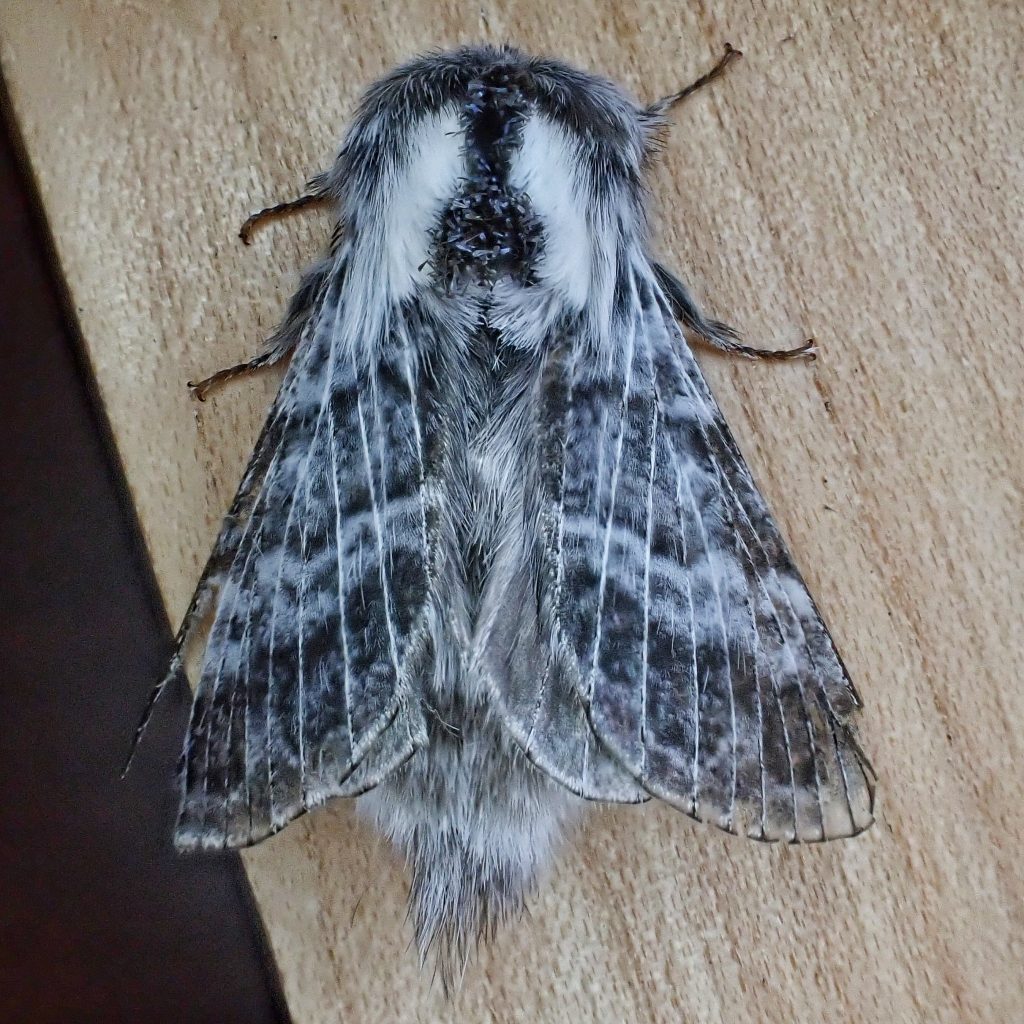
These members of the family Lasiocampidae have no accepted common name (although in one place I saw them referred to as the Distinctive Tolype), but the first time my friend Craig Sondergaard saw them he immediately began referring to them as Fuzzy Butts, and that’s now the common name we always use for them. A quick look at their tufted abdomen will show why that name is so apropos. They are downright adorable moths, rivaled for cuteness only by some of the Furcula species.
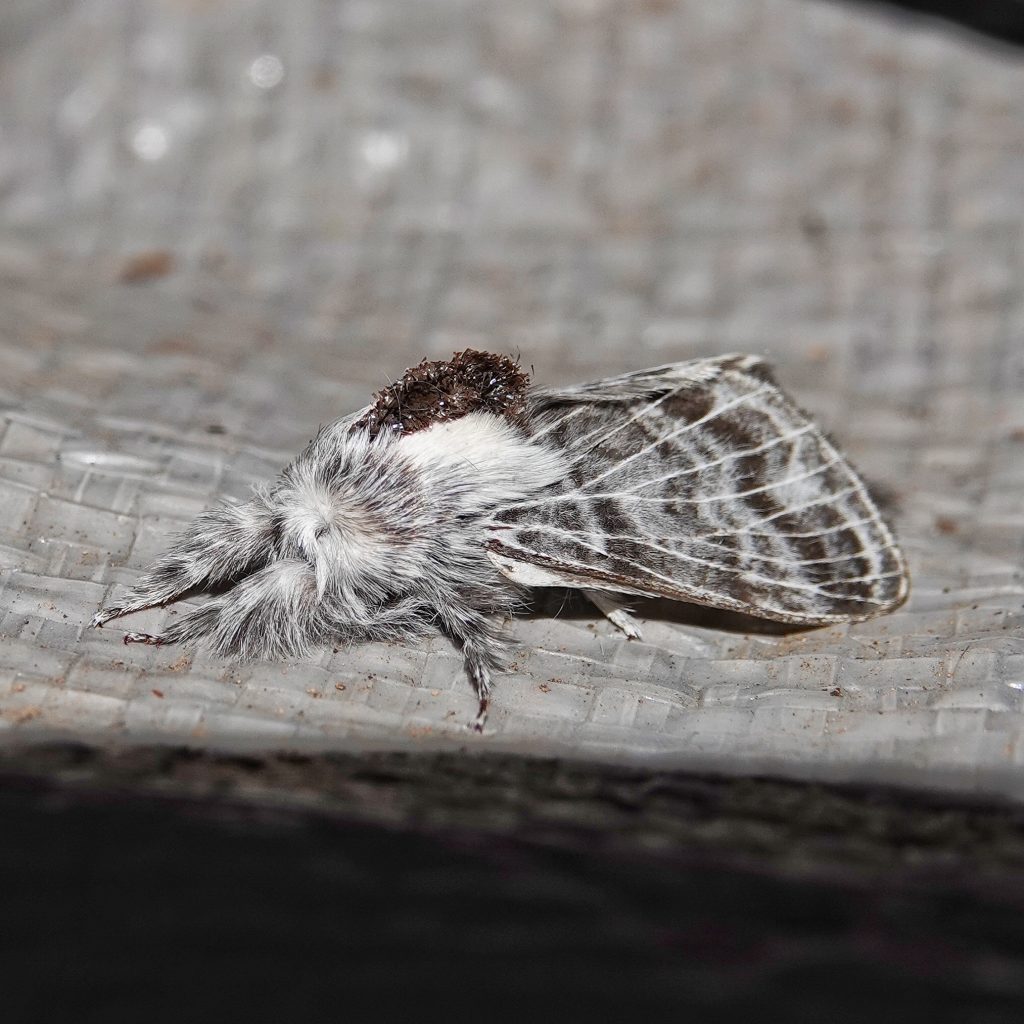
These moths can be quite abundant in good habitat, and that night when Craig first saw them we had over 40 at our lights. They sometimes buzz around for awhile when they first come in, but once the settle down they are there for the duration, seemingly in thrall to the lights, although the ones that have to be shaken from the sheets in the morning will eventually gather themselves enough to fly off.
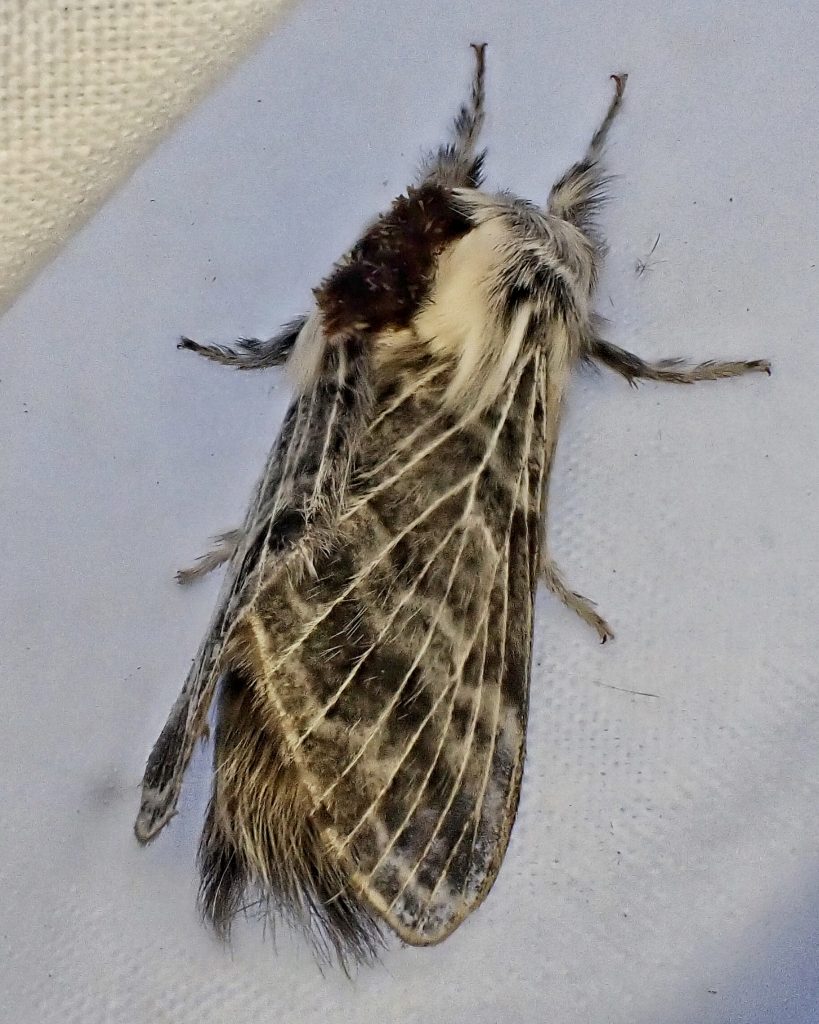
Description-Medium to large (fw length 13-15mm in males, 19-21mm in females) fuzzy grey and white moth with a fuzzy tuft of hair on the abdomen, and a patch of dark, metallic scales on the thorax; thorax is bordered with broad patches of white hairs; the wing veins are white to light gray, and the transverse lines are light grey and separate darker grey areas; legs and head are fuzzy white and grey; hindwing is small, rounded, white to light grey, with a darker grey submarginal band.
Similar species–Tolype laricis is smaller, darker, and has uniformly dark hindwings; Lars Crabo, and many others, consider T. dayi to be synonymous with T. distincta; Furcula sp. lack distinct white or light grey veins, have a dark band in the middle of the wing and near the apex, and the dark scales atop the thorax are not metallic .
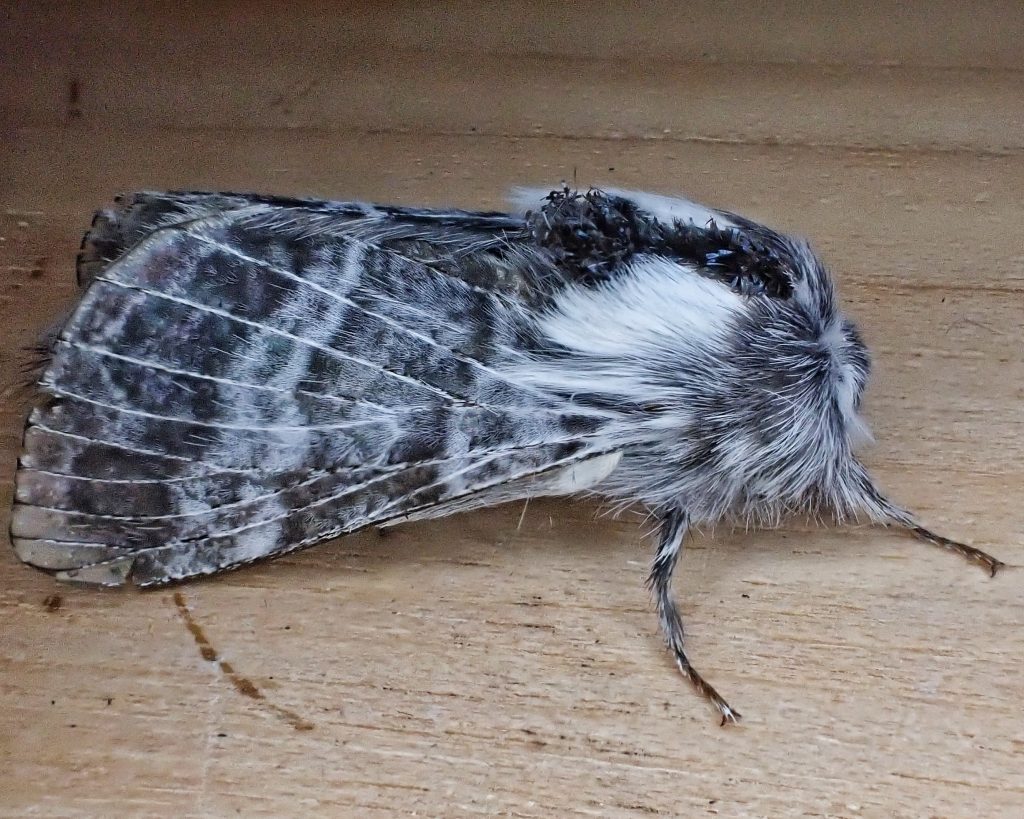
Habitat-Moist to mesic coniferous forests.
Range-Western North America; region wide in appropriate habitat.
Eats-Larval hosts are conifers, especially Western Hemlock, Douglas fir, and true firs (genus Abies); adults do not feed.
Eaten by-Probably insectivores of all classes.
Adults active-Late July into November, most common in August-September.
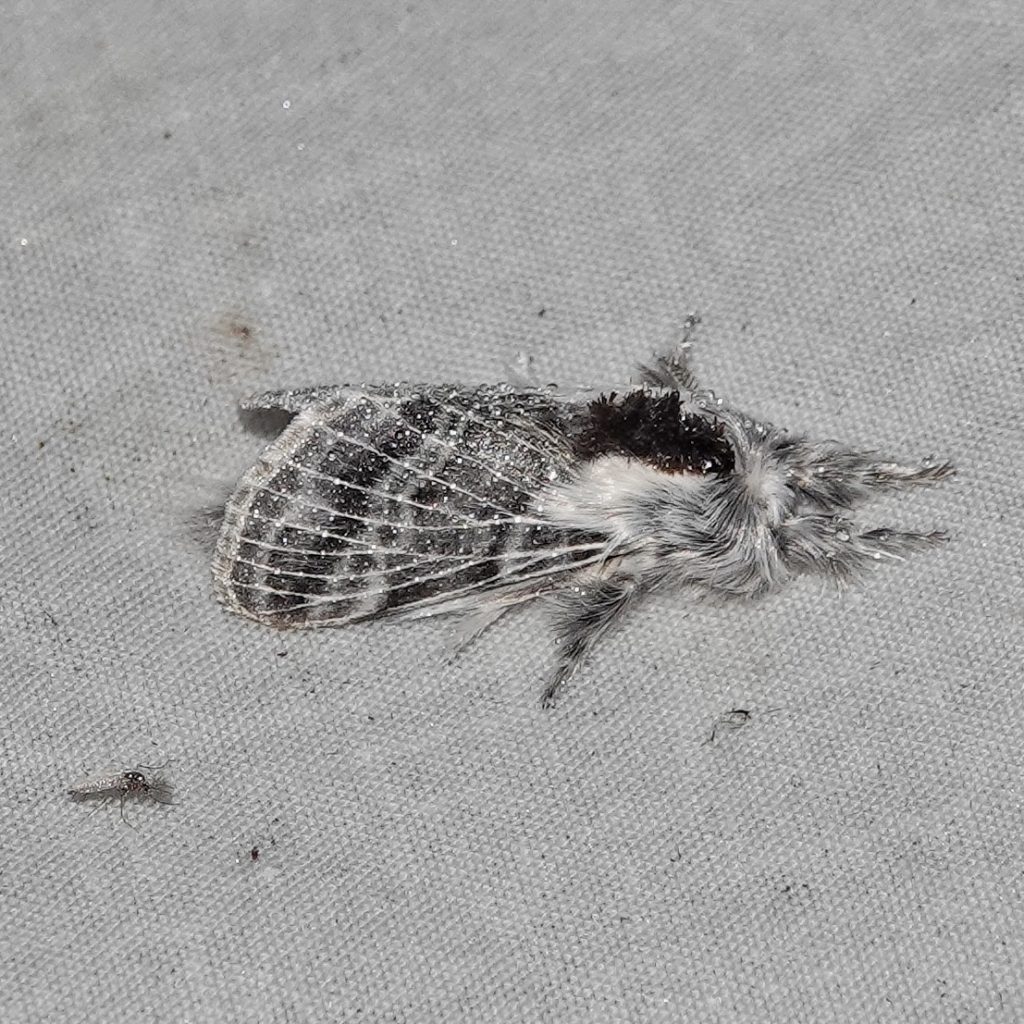
Life cycle-It appears that this species is univoltine, and based on how late in the year it flies, that it overwinters as larvae in diapause.
Etymology of names–Tolype is from the Greek word for ‘a ball of wool’, which probably comes from the same reasoning by which Craig started calling them Fuzzy Butts. The specific epithet distincta is from the Latin word for distinguished, but I’m not sure what it is distinctive from, since most Tolype look very similar to these moths.
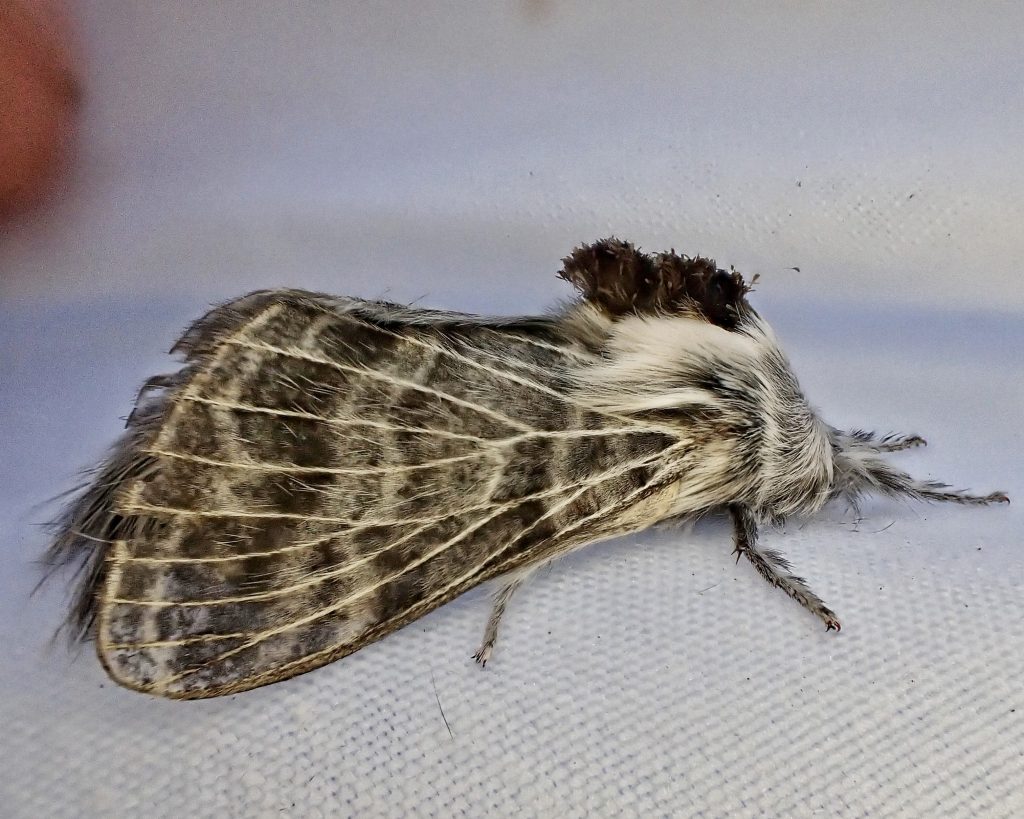
Moth Photographers Group – Tolype distincta – 7677
Species Tolype distincta – Hodges#7677 – BugGuide.Net
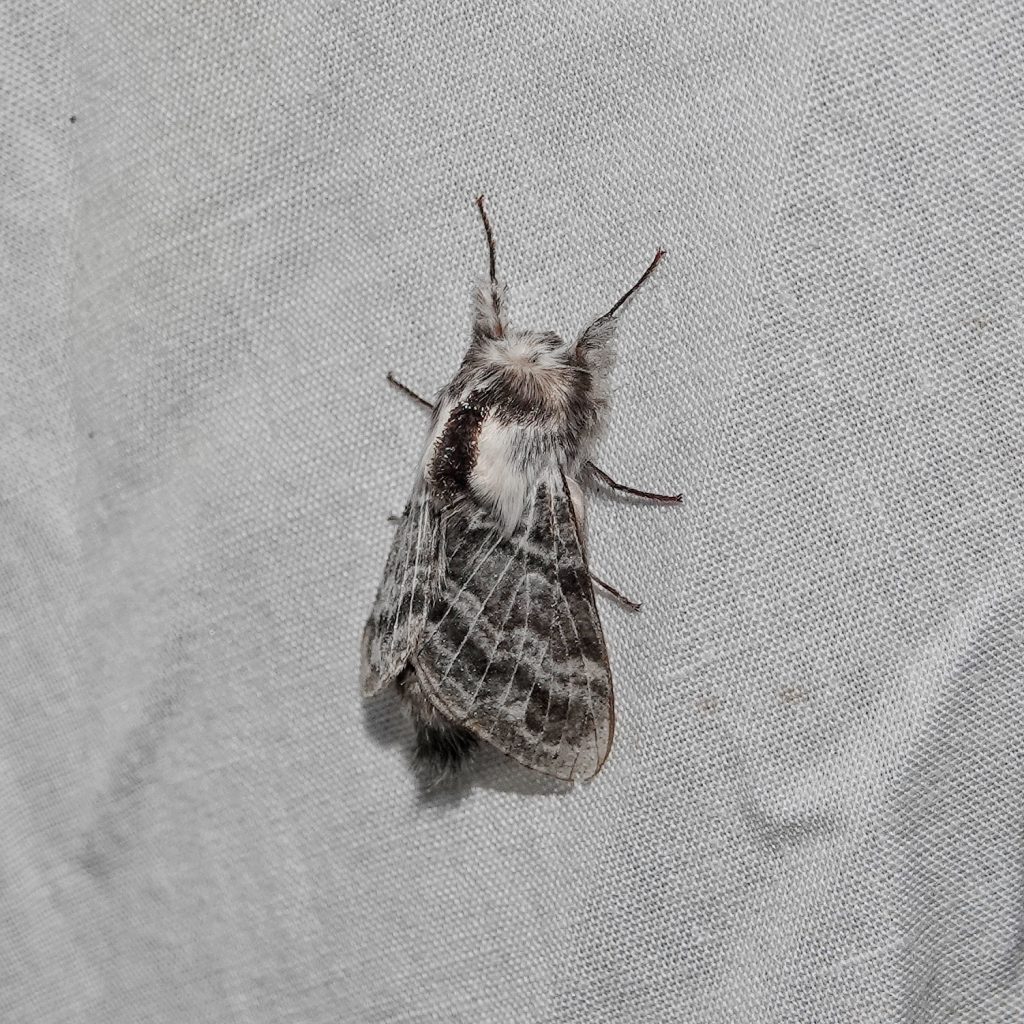
We wonder what is known about the mechanism of settling down at the lights. Some, eg. Catacola, do so only after great fanfare. As you observed, once settled they remain quiet unless disturbed, some until daybreak but many until the following evening.
It’s also interesting to me how well some moths settle down so I can take photos after a bit of refrigeration, and how some fly almost immediately when I shake them out of the container, even after a lengthy period in the fridge.
Try freezing them. My son when in high school would catch big house flies put them in the freezer. When frozen, he would tie thread on one hind leg, put it in a baggie with air trapped inside. He’d get it out at his desk. By then, the fly had thawed and would fly circles around my son’s desk. I got a lot of teacher calls. But after hanging up ( old school phone) I’d laugh till I cried.
They always die when I freeze them, Sheila, which precludes releasing them afterwards.
What a beautiful moth!